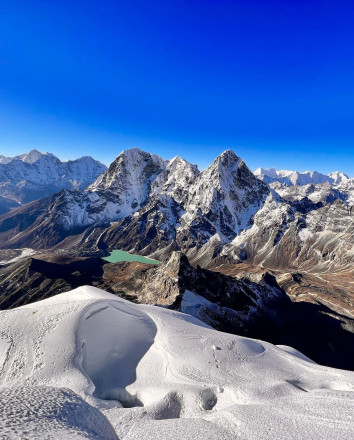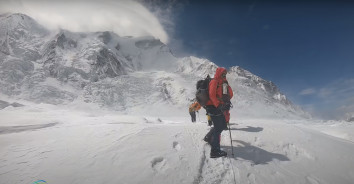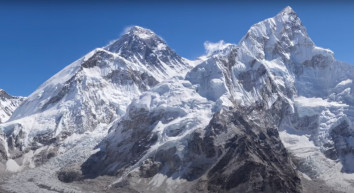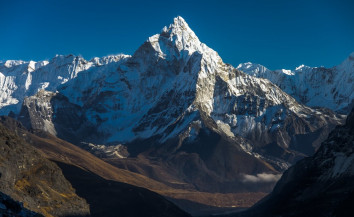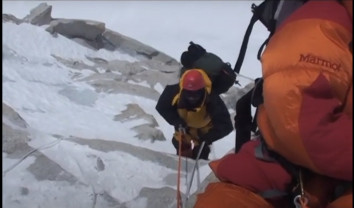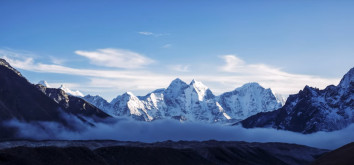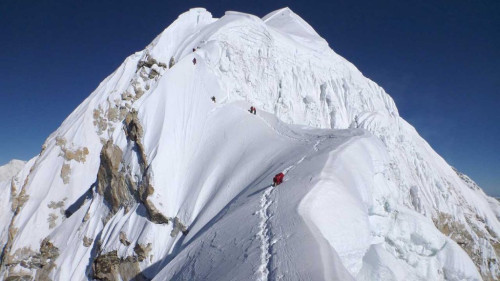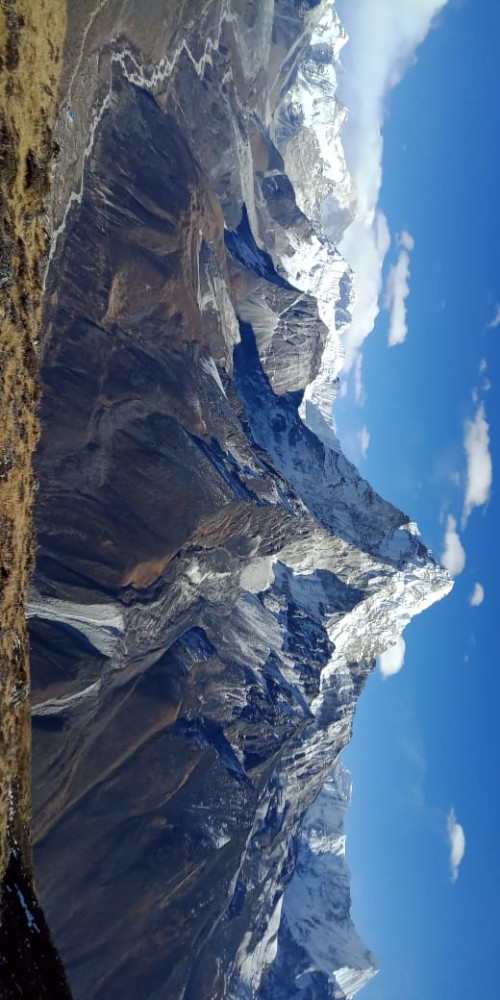If you ever climb Dhaulagiri, you'll live with pride in your life. The 8,167 metres tall Dhaulagiri, 6th of 14 world's highest peaks, stands 7000 metres from the deepest gorge of Kali Gandaki dale. The humongous, diamond-shaped Dhaulagiri is ideal for summiteers and nightmare to those who fail.
"Dhaulagiri" translates to a gleaming, and "Giri" translates to a mountain resembling a sparkling diamond. The sparkling Dhaulagiri, a member peak of the Dhaulagiri range in the Annapurna region, stretches to extreme 70 miles. It extends from the Kali Gandaki valley to the Bheri River valley.
Not only the Dhaulagiri expedition but the trek to its base camp also gives the ultimate high-altitude trekking experience. From the base camp, two of the Dhaulagiri ridge's faces are to the west and three to the south. There are five Dhaulagiri member peaks altogether, among which Dhaulagiri I, at 8,167 metres, is the tallest. Dhaulagiri peak rises to 7,751 metres, 7,715 metres, 7,661 metres, and 7,618 metres.
The Dhaulagiri summit is rewarding with the magical glimpses of the Annapurna range, Churen Himl at 7,371 metres, Putha Hiunchuli at 7,246 metres, Gurja Himal at 6,342 metres, and Junction Peak at 4,235 metres.
Dhaulagiri Expedition- Route to Summit and Summit Plan
Climbers follow the popular climbing route, the NorthEast ridge route to the Dhaulagiri summit. The four camps are Advanced Base Camp, Dhaulagiri Camp I, Dhaulagiri Camp II, Dhaulagiri Camp III, and Dhaulagiri summit. These camps stand at 4,748 metres, 5,450 metres, 6,400 metres, 7,400 metres, and 8,167 metres.
Dhaulagiri Advanced Base Camp, 4,748 metres
World Expedition Nepal leads the Dhaulagiri expedition in Autumn 2023 and Spring 2024 with a fixed number of climbers in a team. On request, we'll also take the summit route via SouthEast, NorthWest, and SouthWest routes.
First, we'll hike to Dhaulagiri Base Camp from the south via Majhangdi River, a canyon amid the north face of Dhaulagiri I and II. The Base Camp sits over the Eiger, a steeper rocky encounter that breaks up the Dhaulagiri North face with the Northeast spur. But, the Eiger is not the safest location as it is an avalanche-prone area.
For the initial climb, climbers have to hike through the Icefall section starting from the Eiger foot and up to the low part of the ridge betwixt Tukuche Ri and Dhaulagiri. The actual scale of Northeast Ridge now appears to the climbers.
World Expedition Nepal will manage the tented Dhaulagiri Advanced Base Camp at the safest place at 4,748 metres. The Base Camps get filled with other expedition team members with whom you can chat. You'll get personal tents with meals served in the kitchen and tented washrooms at Dhaulagiri Advanced Camps.
Dhaulagiri Camp I, 5,450 metres
After proper gear inspection and climbing training from our Dhaulagiri expedition Sherpa guide, we'll make our way to Dhaulagiri Camp I at 5,450 metres. The climb duration to Camp I is 5 hours.
The initial climb to Camp I takes you to a familiar ridge among climbers, the Jacobs Ladder. The moderate and technical climb demand of Jacob's Ladder is undemanding compared to calling ascending Camp I. The climb on the snow and limestone wall of Jacob's Ladder is now a spot for Dhaulagiri Camp II. The first Dhaulagiri expedition team had set their intermediate High Camp on this ridge over the pinnacle of the icefall.
Before reaching a glacier section en route to Camp I, you'll get the chance to hike on the glacier moraines, grassy gradients, and ice lumps.
The arduous climb of the moraine takes climbers nearly two hours and another two hours climb on a 200-metre slope with 40 degrees inclination using a fixed rope.
Overnight at tented camps at Camp I.
Dhaulagiri Expedition Camp II, 6,400 metres
The ice and mixed climbing sections of Camp Ii demand intermediate climbing skills. The more comfortable and safest route of the entire expedition is from Camp I to Camp II. Thus, climbers traverse this day's climb in three hours.
The heaven of ice and snow en route keeps the climb entertaining. Also, it adds the stabilising works on the leading guide and climbers.
The first section of the climb to Camp I is walking in the snow for two hours. The comfortable climb to Camp I follows the 40-degree steeper blue ice climb slope. This slope extends nearly to 60 metres. However, you don't need any ladder to climb this slope.
Most climbers find this slope the heart of the route. Camp Ii sits beautifully over the snow-filled terrain.
Dhaulagiri Expedition Camp III, 7,400 metres
Camp II to Camp III is roughly a kilometre long distance. The entire route is difficult to climb without any fixed lines. So, the Sherpa guides will fix the ropes to Camp III. However, the fixed lines make the hike most secure for climbers.
The continuous slopes and exposed ridges are prone to wind and fierce cold. The obstacle en route to Camp III is on the highly exposed East Ridge, where climbers encounter high wind velocity. Also, the ice slabs covered with fluffy snow in Spring make the hike arduous and high risk. Thus, to avoid unseen crevasses and blue ice slabs, prefer climbing Dhaulagiri in Autumn with us. The sun, hitting the snow chunks, also makes the route avalanche prone.
After 5 hours of mixed climbing, you'll reach Camp III of Dhaulagiri.
Dhaulagiri Summit, 8,167 metres
With an ideal weather window on our side, we'll push to the summit at midnight and climb to the top at around 7 am. Our target for the day will be climbing the Dhaulagiri summit and making a safe return to Camp III. We'll have a reserve day for the summit push if the weather turns bad. For this, we'll stay at fallback camps at 7,900 metres.
The summit climb is arduous to some extent. Sherpa guides will fix 900 metres of fixed rope from Camp III to the summit. The serac from Camp III requires 400 metres of rope and another 400 metres of rope to climb past serac. The climb below the false summit also requires 100 metres of fixed rope. The blue ice and snow persist throughout the climbing route.
Looking for Dhaulagiri expedition in Autumn 2023/ 2024?
We, at World Expedition Nepal, employ IFMGA-certified climbing guides and sherpa for the Dhaulagiri expedition we run. Also, we design this expedition with precise logistics and acclimatisation.
World Expedition Nepal is running Dhaulagiri expedition for Autumn 2023 and Spring 2024. After a long Covid pandemic, climbers from different countries are making their inquiries about expeditions in Nepal. So, we are receiving inquiries for trekking, peak climbings, and mountain expeditions. We are overwhelmed with the inquiries we are receiving at this time. Also, most climbers who make inquiries with us are reserving their seats for Dhaulagiri expedition in Autumn 2023 and for Spring 2024.
We operate every expedition with a fixed number of clients. Thus, we encourage you to reserve your seat before it fills out. We are ready to take you to this expedition for Autumn 2023 and Spring 2024. Are you ready?

 Recommended On
Recommended On

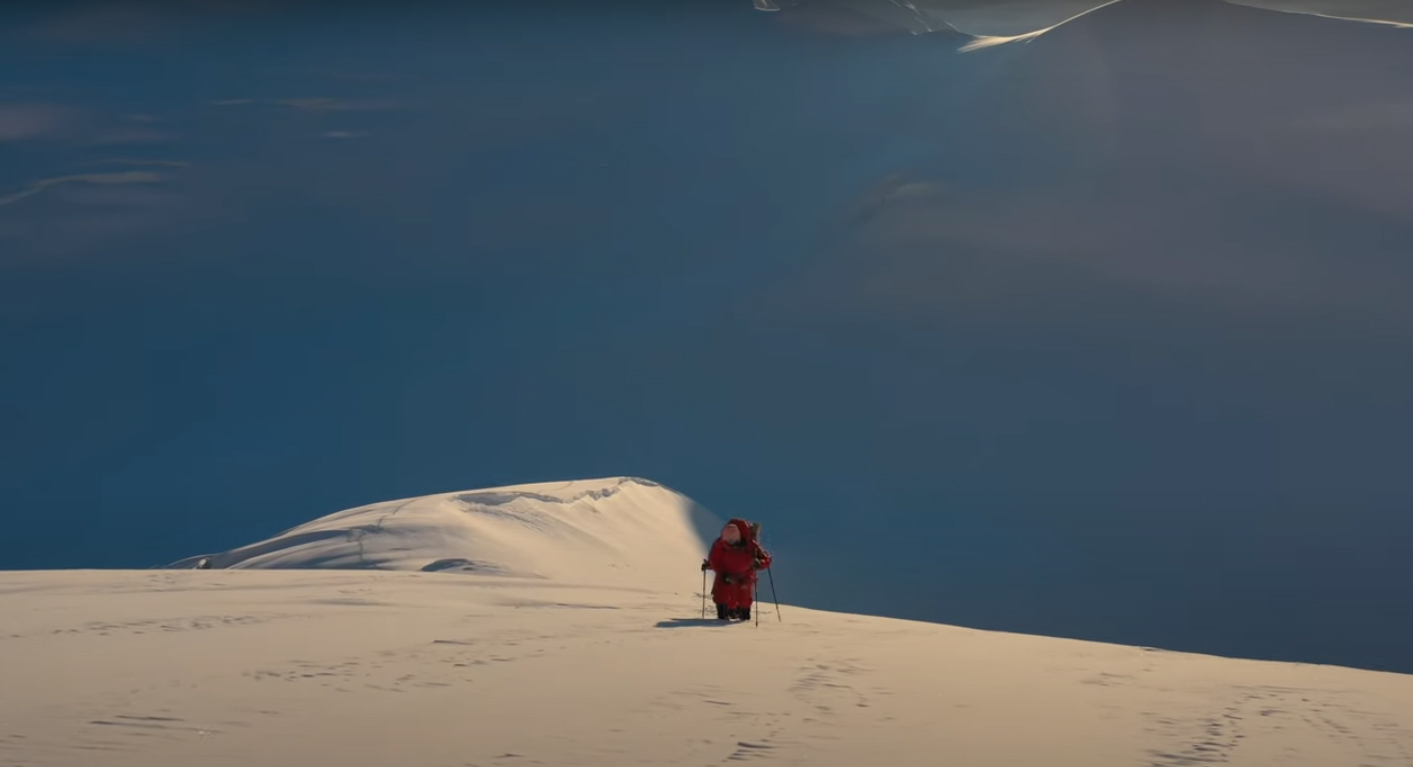


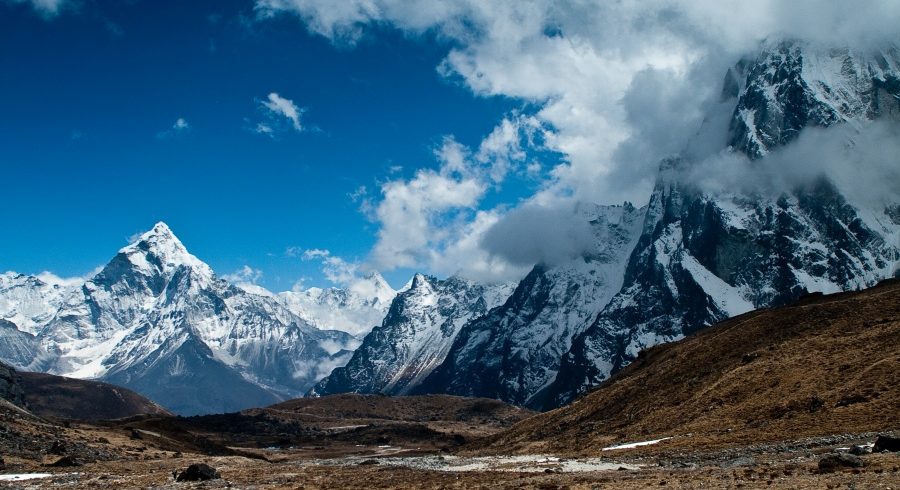
 8000m Peak Climbing , Nepal
8000m Peak Climbing , Nepal  66 Days
66 Days  US$31000
US$31000
